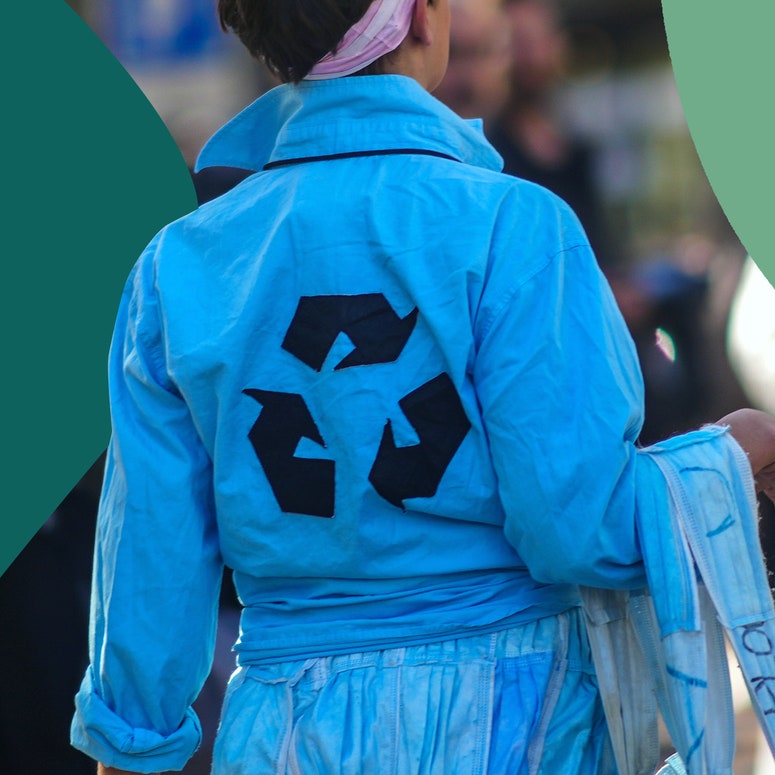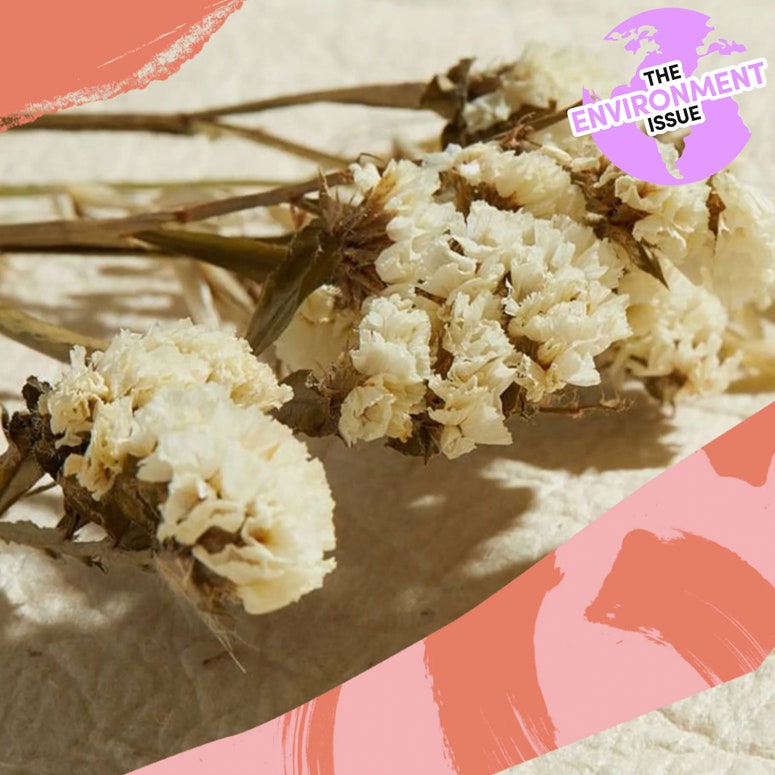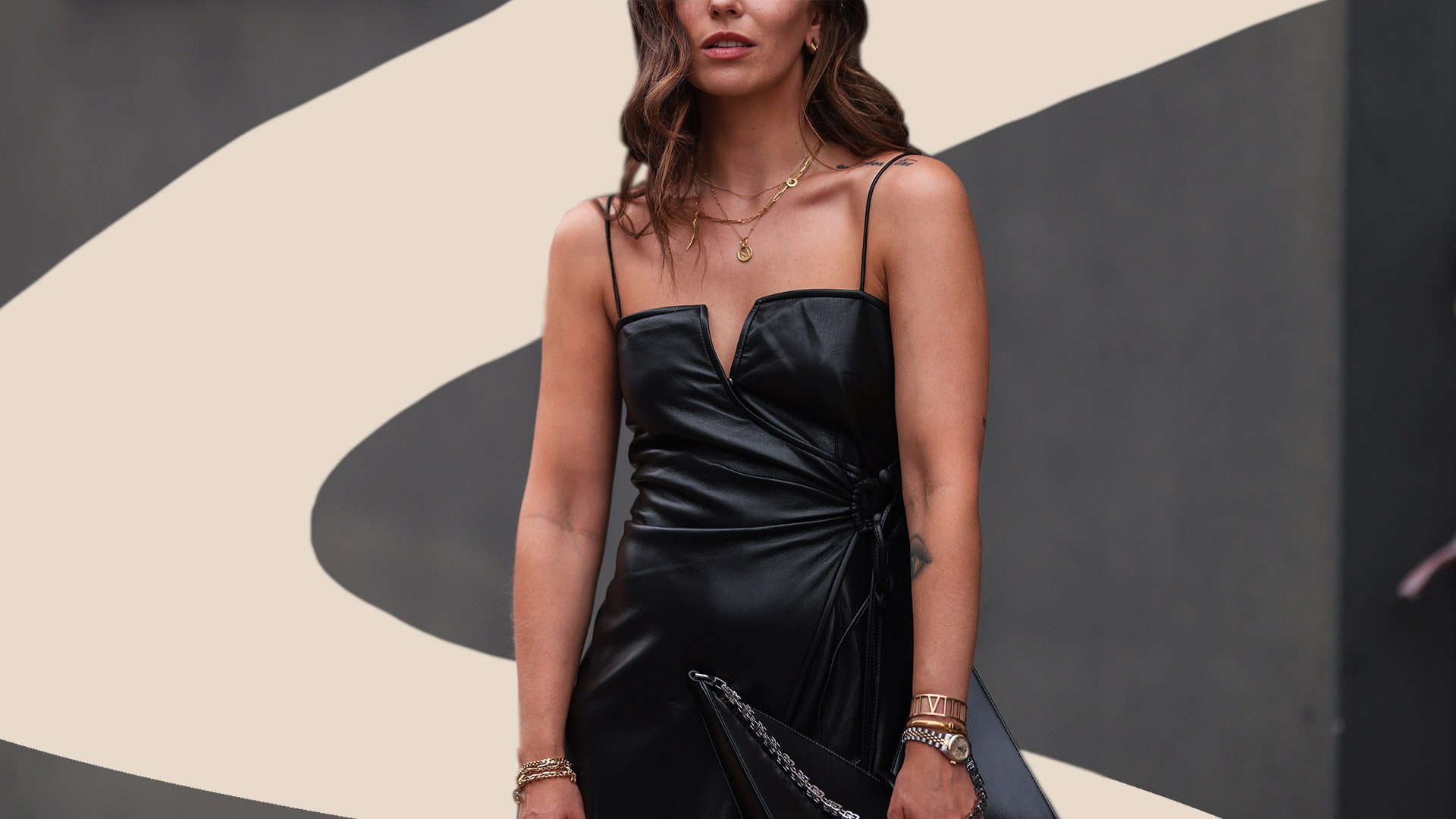Vegan leather of course seems like the best option if you have pledged to avoid animal products in your diet and wardrobe or want to live more sustainably. However the differences between vegan leather and animal-derived versions are not as clear cut as you might hope.
With the debate rife after PETA supporters took to New York Fashion Week to protest the use of leather on American luxury brand Coach's runway, GLAMOUR is here to demystify the differences…
Last year Portugal banned the term ‘vegan leather’ and France is considering follow suit. Apparently the Portuguese government felt the term was misleading for customers who believed ‘vegan leather’ was an all-natural product, when it’s often made from an array of plastic-based synthetics. Some versions aren't even 100% vegan (but that's a whole other case of greenwashing) although it’s key to keep in mind that leather footwear exports are worth $1.5billion to the Portuguese economy and are the country’s biggest export after cars, car parts and petroleum…
‘Sustainable’ labels can actually mean anything but…

PETA Director of Corporate Projects, Yvonne Taylor, told GLAMOUR, “Regulations designed to restrict the use of the term “plant leather” are signs of the growing concern among industries that exploit animals that they will soon – rightly – be seen as relics of a time when we knew little about health, the environment, or animal welfare. The vegan leather boom shows no sign of slowing: the market is predicted to be worth over £67 billion by 2025.”
As is the case with so many areas of the fashion industry, due to the fact that there are so many layers within production (upwards of 30 stages are often needed to make just one simple garment) traceability and accountability are tough to manage.
And because synthetic leathers are most commonly made from PVC, polyester and PU (plastic-based fibres that need oil for their production and shed micro-plastics into the environment and oceans) they’re hardly a planet-friendly option. But even putting ethics aside, real leather production is a pollution-heavy process - so why isn’t searching out plant-based leathers a viable solution?
Conventional leather processes involve the hide of a dead animal (which is not always a by-product of the food industry, FYI) being treated to tan it, dye it and turn it into the pliable material used to make your shoes, jackets, trousers, skirts and handbags.
In Europe and America, using heavy-metal, cancer-causing toxins in the process has been banned - but that’s not the case world-wide. There are methods of chrome-free tanning that use gentler vegetable or synthetic dyes (& Other Stories and Arket both offer chrome-free leather and suede products now) and Deadwood create their leather staples from recycled and deadstock hides that are already in existence.
One of your five-a-day.

Natalie Smith, founder of luxury leather handbag brand Naru Studios, believes there are ‘good’ and 'bad' leathers. She sources the hides for her brand in a considered way. “We only work with traceable leather, from organic, regenerative small-scale and ethically run farms in Scandinavia, Germany and the UK.”
Natalie points out that the problem with “pleather” is that it can take up to 500 years to biodegrade (vs 50 years for leather.) “We offer a bag which degrades in two years, when placed in the right conditions, due to the fact it has no plastic coating. It’s fully circular as it can be returned to the earth without microplastic pollution, unlike many other leather bags which have a plastic coating.” (And, obviously, including bags that are made from actual plastic.)
According to Natalie, the majority of plant based leather options are still in their “infancy” and not available at scale or cost-effectively. There are limited companies that offer plant-based leathers without plastic-based compounds (plastic is needed to bond the material together) so often a vegan leather item will still include plastics, which break down into microplastics, and which will eventually enter the food chain.
Read this for the inside intel…

Vegan leather is often used as the catch-all term for any suede or leather-look material not made from an animal hide. But there are levels of authenticity in vegan leather. In the past it was named ‘pleather’ (literally plastic-leather) and it’s still mainly described as faux leather in the UK although some brands adopted ‘vegan leather’ to describe any non-animal source (although it may not be vegan in all it’s processes.)
True vegan leathers are created by using nothing from animal sources (that means everything from the base fabric through to the glue used to stick on the sole.) Marks & Spencer describe their synthetic leather as ‘faux leather’ although all their synthetic footwear and accessories are actually 100% vegan (with M&S’s own vegan logo to guarantee this.)
There are several animal leather alternatives made from plants such as so-called mushroom, apple or grape leather which are all more sustainable options and vegan. As with anything you buy, asking questions and checking the labels is essential if you want to work out the truth of where your new buy comes from. Check out GLAMOUR’s guide explaining all the terms to know.
Science just got very chic.

As one of the biggest brands at the forefront of both ethical and sustainable fashion initiatives - and having never used leather, feathers, fur or skins since the brand's launch in 2001 - it should come as no surprise that Stella McCartney is championing plant-based leather alternatives.
Just last month the ethical fashion stalwart launched its iconic Falabella and Frayme bags crafted from MIRUM®, a 100% plastic free, recyclable and circular alternative to leather. Marking the world's first luxury handbags crafted from this new ethical, sustainable fabric, the material is the first of its kind to be both 100% recyclable and circular; able to be safely returned to Mother Earth as nutrients at the end of the bag's life.
Instagram content
This content can also be viewed on the site it originates from.
Jo Sykes, Creative Director at Jigsaw, says, “You don’t need a crystal ball to see the significance of vegan leather in our future. At Jigsaw, we use a beautiful vegan leather curated by a Japanese mill. It’s recycled, which is important, but is incredibly soft and has a beautiful grain. We’re seeing more and more leather alternatives and are not only interested in recycled PU leather, but also materials that derive from mushrooms and cacti, as well as man-made laboratory leather, which I believe will be integral to the future of apparel and accessories.”
Navigating sustainable and ethical fashion can often leave you more confused than before, especially while we continue to exist alongside the development of these more conscious fabrics. The demand is undoubtedly growing, but without the supply at mass-market level it can feel difficult to know which way to turn.
Essentially education is key, and it's important to know that ‘vegan leathers’ aren’t necessarily the holy grail of sustainability they may once have claimed to be, and ticking the vegan box doesn’t give you a get-out-of-jail-free card to bypass sustainability.
Of course we’ll leave it up to you to decide what your ethical, moral and sustainability boundaries are when buying anything for your wardrobe, but with this awareness of - and demand for - both ethical and sustainable materials it's crucial that we all continue to champion conscious innovation.
Read more from Glamour UK's Fashion Director at large Alex Fullerton here, or follow her on Instagram @alexandrafullerton.
For more from Glamour UK's Fashion Editor Charlie Teather, follow her on Instagram @charlieteather.
